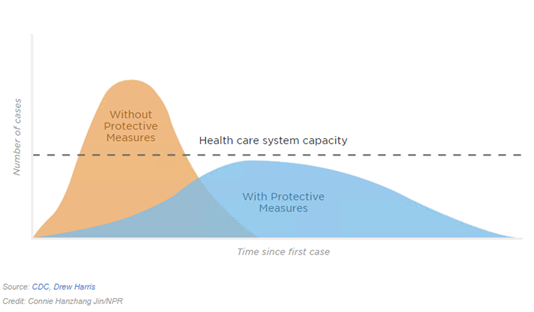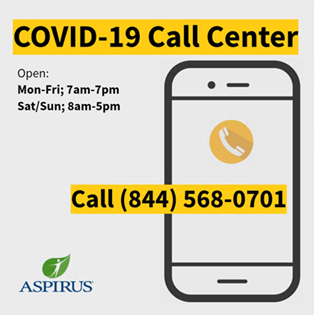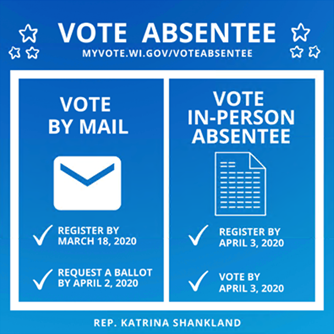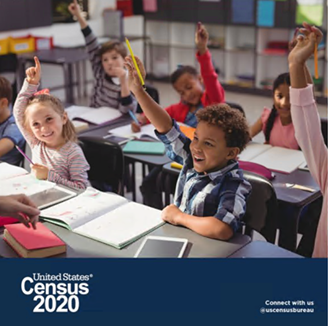|
Coronavirus (COVID-19) Updates
The health and safety of our community members is of utmost priority, and as COVID-19 has impacted increasing numbers of people here in Wisconsin and throughout the country, I have been keeping a close eye on what the scientists and public health officials are telling us.
Wisconsin has now seen 47 confirmed cases of COVID-19, including one in Wood County. You can see on DHS' website where cases have been confirmed here.
Last week, Governor Evers declared a state of public health emergency, which will open up access to additional resources to help our state respond to and contain the outbreak and deal with new cases as they arise.
On Sunday, the Center for Disease Control and Prevention (CDC) recommended that gatherings of 50 or more people should be cancelled or put on hold for the next eight weeks. Whether it’s conferences, parades, weddings, or festivals, these large gatherings could easily contribute to the spread of COVID-19 throughout the country.
Today, Governor Evers also banned gatherings of 50 people or more statewide, meaning that bars and restaurants will have to limit their number of patrons in order to help slow the spread of the virus. The order does not apply to grocery stores, food pantries, childcare centers, pharmacies or hospitals. You can read more here.
In addition, we all can do our part by practicing social distancing. As universities begin holding courses online and businesses temporarily close or offer opportunities for their employees to work from home, it can be both disruptive to our daily lives and the economy while also protecting the public health and saving lives. The idea is to limit our movement in public spaces and to stay at least 6-10 feet from others when we do go out to help prevent the spread of the virus.
Why is this important? We don’t have enough health care resources, like ventilators, hospital beds, and health care workers, if everyone gets sick at once. Staying at home and limiting our exposure to members of the public slows down the inevitable spread of the virus. By social distancing, we can delay the immediate spread of the virus to help ensure our most vulnerable members – the elderly, the immunocompromised, those with underlying health conditions – can get the resources they need if they must seek medical care. Some might ask, “But I’m healthy and I probably won’t need medical care, so why do I have to participate?” This approach considers the health and well-being of everyone and helps our fellow community members thrive. You can read more about social distancing and flattening the pandemic curve to save lives here and here.

On Friday, Governor Evers directed Department of Health Services (DHS) Secretary-designee Andrea Palm to issue an agency order mandating the statewide closure of all K-12 schools, public and private, as part of the state’s efforts to respond to and contain the spread of COVID-19 in Wisconsin. According to the governor, the mandated closure will begin on Wednesday, March 18th, in order to give school districts ample time to make plans for kids, families, educators, and staff. School districts, particularly those in counties with reported cases of COVID-19, may choose to close earlier than Wednesday. The anticipated reopening date is April 6, 2020; however, the reopening date is subject to change pending further information. For more information about these school closures, you can read this Frequently Asked Questions fact sheet here.
It’s important to me to keep in close contact with local, state, and federal government leaders. I participated in a White House briefing on COVID-19 with federal, state, local, and tribal officials, and I also watched the Wisconsin Department of Health Services' Facebook Live, which you can watch here, and Governor Tony Evers’ press conference, which you can watch here. I’ll participate in a briefing with the Department of Health Services this week and have been in frequent contact with the governor’s office. As this situation unfolds, do not hesitate to reach out to me with any questions you may have.
With more testing facilities now available, we can expect to see more cases. As they're identified, our local health departments and state DHS are moving quickly to isolate cases and contain the spread of the virus. Wisconsin will also be receiving more than $10.2 million in federal funding to support response and prevention efforts, according to the Centers for Disease Control and Prevention (CDC).
As of now, we have no confirmed cases in Portage County, but with one confirmed case in Wood County, it's crucial that we all continue to take basic precautions, like washing your hands for at least 20 seconds, trying not to touch your face, covering coughs and sneezes, cleaning objects and surfaces you touch, staying home when you are sick, and social distancing if at all possible.
COVID-19 Resources
- This can a stressful time. If you are feeling overwhelmed, anxious, or scared, please feel free to call Distressline at 1-800-985-5990 or text TalkWithUs to 66746.
- If you are struggling with bills or need resources, please call 211.
- If you are experiencing symptoms, please call your physician. If you do not currently have a physician, consider using Aspirus’ COVID-19 call center or another health care provider’s call center. Some insurance companies and health care providers also offer virtual visits. It’s important that you call ahead before seeking treatment. More information from the CDC here.
- To report suspected price gouging, please contact DATCP’s Consumer Protection Hotline at DATCPHotline@wisconsin.gov or (800) 422-7128, or file an online complaint. (Please provide the following information: Date the product was offered for sale, seller's name, seller's location, and specific product being sold, including product name, size and price)
- For employers: to help avoid layoffs and allow workers to remain employed during times of reduced business activity, consider the WorkShare program from the Department of Workforce Development.

COVID-19 Guidance from the CDC
The Centers for Disease Control and Prevention (CDC) currently advises that common symptoms include flu-like symptoms (fever (100° F or higher), cough or sore throat, headache or body aches, and in some cases diarrhea and vomiting) or symptoms of respiratory illness (fever (100° F or higher), cough, and shortness of breath). The best way to prevent illness is to avoid being exposed to this virus. In order to slow or stop the spread of these illnesses, it is critical to follow the below instructions, which is guidance from the CDC.
CDC always recommends everyday preventive actions to help prevent the spread of respiratory diseases, including:
- Avoid close contact with people who are sick.
- Avoid touching your eyes, nose, and mouth.
- Stay home when you are sick.
- Cover your cough or sneeze with a tissue, then throw the tissue in the trash.
- Clean and disinfect frequently touched objects and surfaces using a regular household cleaning spray or wipe.
- Follow CDC’s recommendations for using a facemask.
- CDC does not recommend that people who are well wear a facemask to protect themselves from respiratory diseases, including COVID-19.
- Facemasks should be used by people who show symptoms of COVID-19 to help prevent the spread of the disease to others. The use of facemasks is also crucial for health workers and people who are taking care of patients with confirmed or suspected COVID-19 (at home or in a health care setting).
- Wash your hands often with soap and water for at least 20 seconds, especially after going to the bathroom; before eating; and after blowing your nose, coughing, or sneezing.
- If soap and water are not readily available, use an alcohol-based hand sanitizer with at least 60% alcohol. Always wash hands with soap and water if hands are visibly dirty.
It is important that we all stay informed, and make sure any information we share with others is accurate. The best places to find up to date information and resources are the Wisconsin Department of Health Services’ website here and the CDC's website here. For more local updates about what’s going on in our community, from organizations’ hours to offers to help from community members, feel free to tune into my Facebook page.
Make a Plan to Vote!
With our spring primary election just around the corner on April 7th, it’s also important to have a plan to vote. If you are concerned about appearing in person due to this outbreak, you have the option of having your ballot mailed to you at home or voting in-person during early voting hours instead of on the day of the election. You can check your registration status, register to vote, and request an absentee ballot at myvote.wi.gov.

Please note that if this is your first time absentee voting, you will be required to upload a photo of your photo ID. I just requested an absentee ballot using this process, and it took me five minutes total. It’s quick and easy!
The 2020 Census is Happening Now!
Take 10 minutes to make sure you and your community get counted by visiting 2020census.gov.

A complete and accurate 2020 Census ensures that Portage County gets the resources and representation we deserve. For each person counted in the census, our communities get funding for crucial services like health care, transportation, schools, child care, and affordable housing. We need each and every Wisconsinite to count! This includes citizens and noncitizens, newborns, seniors, students, homeowners, renters -- everyone.
Filling out the 2020 Census is safe and your data is protected by strict confidentiality laws. It’s also incredibly convenient. You can fill out the census online (visit 2020census.gov), by phone, or on paper. Check your mail for the instructions or visit the U.S. Census Bureau website for more information!
|